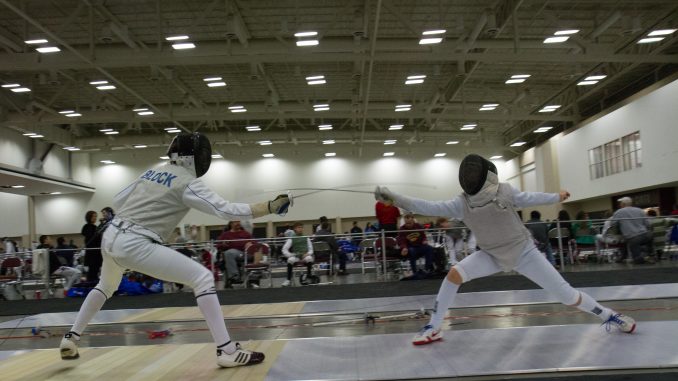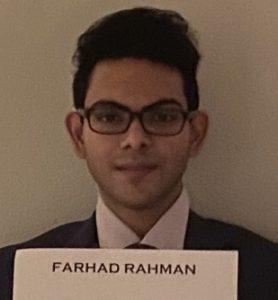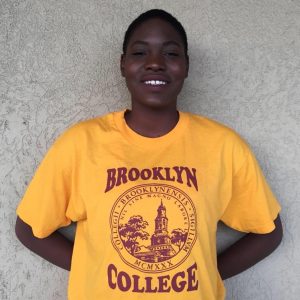
By John Schilling
A club that was dead was born again and then died again.
It was two years ago that COVID-19 began to spread rampantly, moving classes online and closing businesses across the world. For the Brooklyn College community, this crisis was felt throughout, but for its now-defunct Fencing Club, the pandemic was especially devastating.
“Unfortunately, the pandemic was the perfect storm for preventing the club from moving forward,” said Farhad Rahman, the Fencing Club’s treasurer. “Given the circumstances, the club could not possibly be operated.”
When the pandemic shut down the Brooklyn College campus on Mar. 11, 2020, the Fencing Club, which facilitated a semi-contact sport reminiscent of sword fighting, could not just shift online as other clubs did. A closed campus not only meant the Fencing Club had no room to host meetings, but the fencers could not retrieve their equipment stored on campus for the months that would follow.
This was a minor problem in the grand scheme, however, as the Fencing Club’s six acting members could not even meet independently if they wanted to, prompting them to focus on their studies and staying safe.

“Given NYC’s mandates…we were also barred from hosting contact, high-intensity sports indoors so even if we wanted to host a ‘Fencing Club’ with no ties to Brooklyn College, we would hit a dead end for indoor activities,” added Rahman. “The layout of classes during the pandemic also further prevented [me]…from doing anything other than focusing on the much more intense remote classwork.”
Because Rahman was a senior, as well as Fencing Club President Nick Wongshue, the two graduated that semester, and the club they had founded together became obsolete and lives on only in their memories: some positive and some negative.
Prior to the pandemic, the Fencing Club’s fate was already uncertain in late 2019 when Rahman and Wongshue claimed there was a lack of communication from the school’s Undergraduate Student Government (USG) about whether or not the club had been approved for funding and larger meeting spaces.
This was a time of transformation across Brooklyn College, as the school shifted from the CLAS Student Government of Brooklyn College (CLAS) to USG. Prior to this conversion, CLAS funded clubs, like the Fencing Club, in the form of reimbursements, a process that the Fencing Club was accustomed to.
“Previously, the process of receiving funding was simple,” said Nick Wongshue, the Fencing Club’s president. “We would fill out an Excel spreadsheet of the items we were requesting and include the cost and the web address the item was from. Then, we would attend a meeting to pitch our requests, and then, we would wait for the approval.”
As the conversion between the two student governments began, according to Rahman, the Fencing Club was unable to host any formal meetings as they had heard nothing about the reallocation of the club’s promised budget once the government turned over. Despite this looming question of funding, however, Wongshue revealed that the Fencing Club tried to make it work.

“The club was [last] active in the Fall 2019 semester,” said Wongshue. “We were given the approval to have our meetings in the Student Center, but it was difficult to properly conduct our meetings in that room due to our club being a sport.”
Typically, Wongshue or Rahman would manage these meetings while simultaneously submitting request after request for bigger rooms, something that Rahman believes was not taken seriously by USG, the Student Center, or Student Activities due to the club’s few members. The requests, according to Rahman, also caused a rift between the club and the Kinesiology program, which used the larger meeting spaces in the West Quad Building that the Fencing Club hoped to utilize for meetings.
“There were some important key figures outside of our usual contacts at the Student Center who had control over the club’s activities yet they did not seem to take our club very seriously,” said Rahman. “We were incredibly limited with our club’s potential to grow and operate.”
This included one of the Fencing Club’s ultimate goals of competing with other schools. While this never came to fruition, the Fencing Club made do and carried out meetings that were based largely on “fun activities to practice and get the hang of the equipment and the sport.”
It was only one meeting, however, that the club’s members actually participated in friendly matchups, which according to Rahman, is his fondest memory of the whole experience.
“I think that was the best time we’ve had with the club as it gave our members a chance to have fun with fencing,” said Rahman. “It showed both Nick [Wongshue] and I that we could actually operate an enjoyable club.”
In December 2019, during the uncertainty, then USG President Alyssa Taylor claimed to not be aware of the Fencing Club’s difficulties but vowed to speak with the USG treasurer, the club director, and Student Activities to “get a clearer picture of the situation.”
After investigating the matter, Taylor confirmed the Fencing Club’s status was “pending” due to missing paperwork they had failed to submit.

“Any clubs not fully active has their portal frozen, and as a result, they are unable to submit events and receive funding,” said Taylor. “Within the bylaws [of] USG, Article 2, Section 16, Point 7 states ‘Grant requests shall not be approved for suspended organizations, even upon a vote of the Club Funding Council or Executive Cabinet,’ therefore the Fencing Club may not receive funding.”
As for the perceived lack of communication by Rahman and Wongshue, Taylor indicated this feeling to be mutual.
“It was expressed to us that the Fencing Club e-board members have [been] contacted regarding this matter, and have not responded to communications at this time,” added Taylor.
Rahman, upon hearing this, confirmed to have received a voicemail on Nov. 27, 2019 from Student Activities. Despite the miscommunication, the Fencing Club looked like it could still get a new lease on life.
In January 2020, the Fencing Club’s status returned to “active,” as the club became “unfrozen” when the e-board members submitted their signature cards to Student Activities. The matter, however, was still far from resolved since the question about funding persisted.
The COVID-19 pandemic would then take care of this issue just two months later, and the Fencing Club, after all its struggles, was no more. The door, however, is not completely closed on the Fencing Club making a return even without Rahman or Wongshue at the helm, as fencing seems to be making a comeback in the post-COVID world.
“The sport actually has become more popular in the past 10 years to the point that more clubs are opening in the city and currently there is a lack of qualified instructors/coaches in the nation,” said Rolando Balboa, the head coach for Brooklyn Fencing Center in Carroll Gardens. “COVID did reduce the number of students, and numbers for most clubs went down by a lot. In our case, even with online classes, we were only working with about 15% of our student population. This is changing again, and the numbers have gone up to almost the [ones] prior to COVID.”
Because the club once existed, all it would take to reactivate the club, according to USG Treasurer Evie Barth, is for students to communicate their interest to USG and go through the proper channels, including a voting process for the club’s e-board roles, as well as completing re-registration paperwork and the Sexual and Interpersonal Violence Prevention and Response Course (SPARC) Training for all members of the e-board.

When it comes to funding, however, the club must have an account number, and to make purchases, this is handled through CUNY, a complicated process that can take awhile.
“It’s not something we like, and we’re trying to find ways around it,” said Barth. “That’s something, especially back then, I don’t think anyone really understood. Even now, we’re still understanding little bits about the process…I don’t know that [the Fencing Club] got to that point though if money wasn’t transferred to them.”
Despite the Fencing Club’s struggles and ultimate demise, Rahman looks back on the experience fondly and has no regrets.
“The entire time it felt like we were just fighting a constant, uphill battle to even run the club,” said Rahman. “It is an unfortunate tragedy that the club had to be shut down, but all good things must come to an end.”
Student Activities, Involvement, and Leadership Associate Director Hamilton Raymond and Health and Nutrition Sciences (Kinesiology) Department Chairperson Kathleen Axen did respond to The Vanguard’s request for comment.
